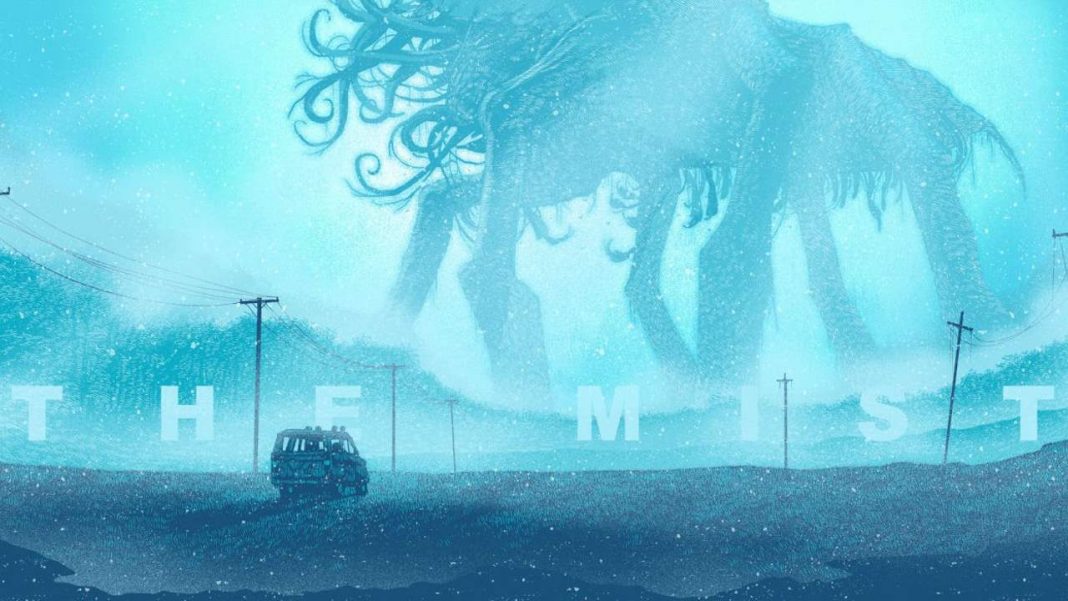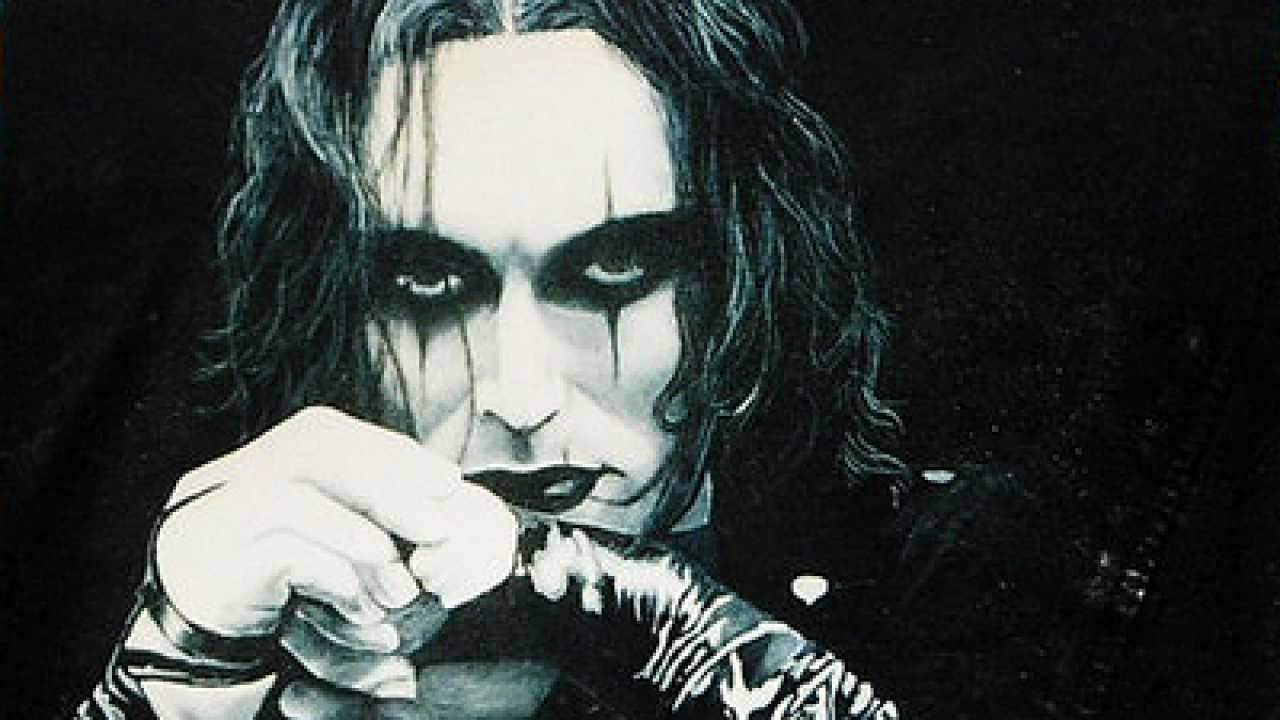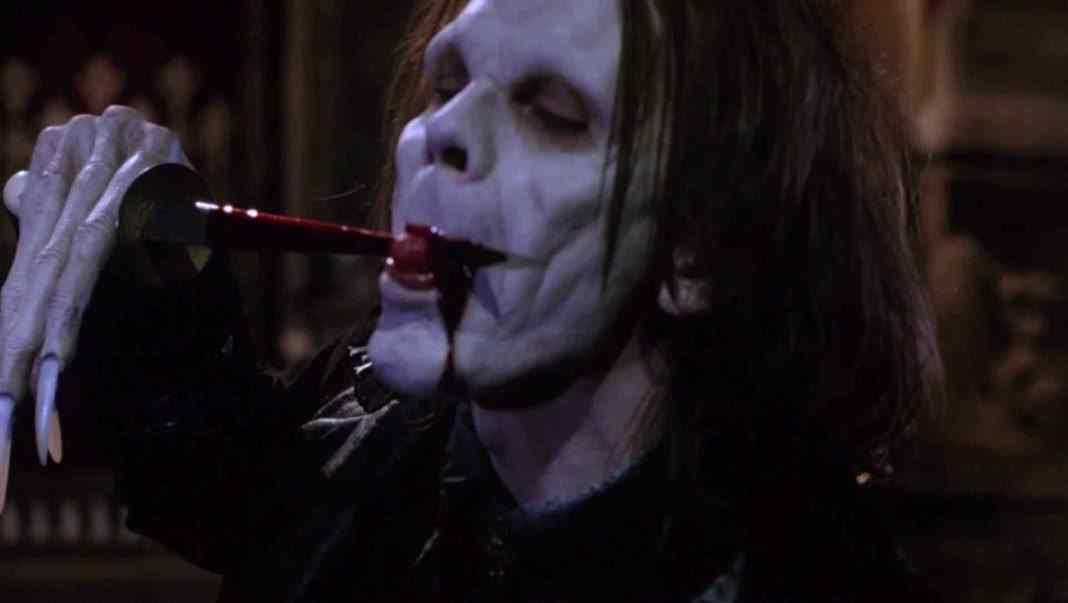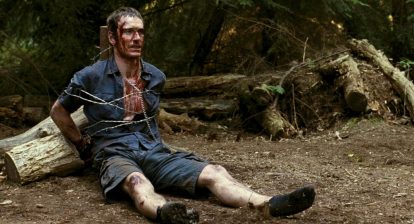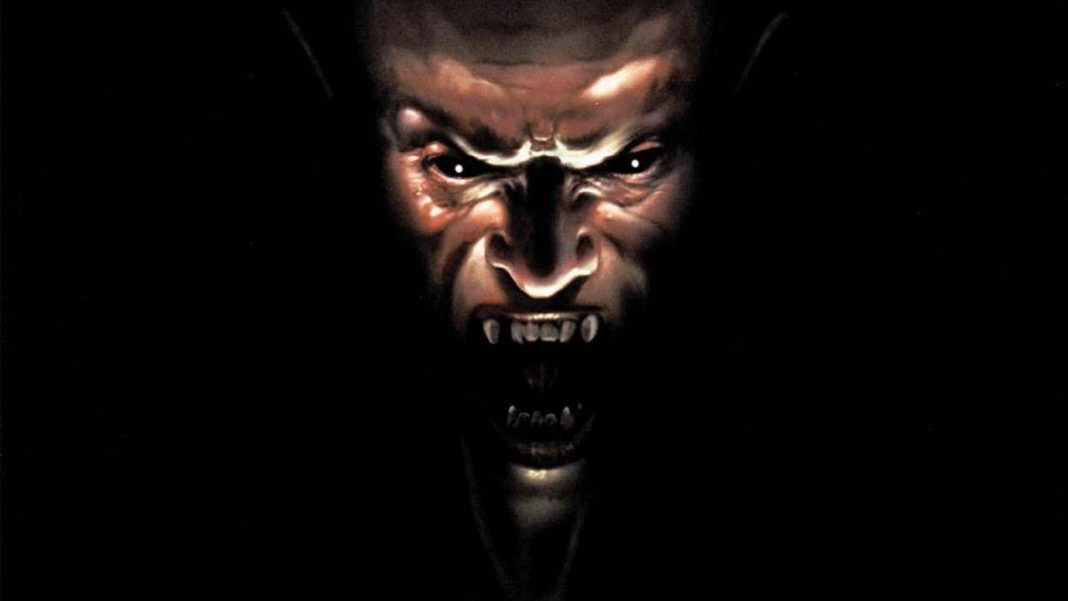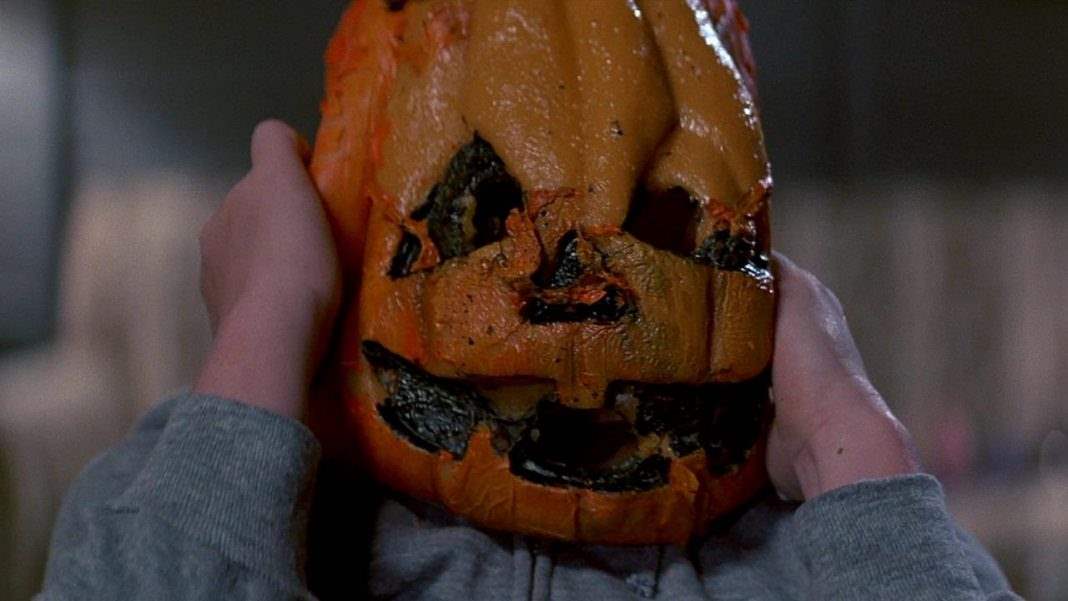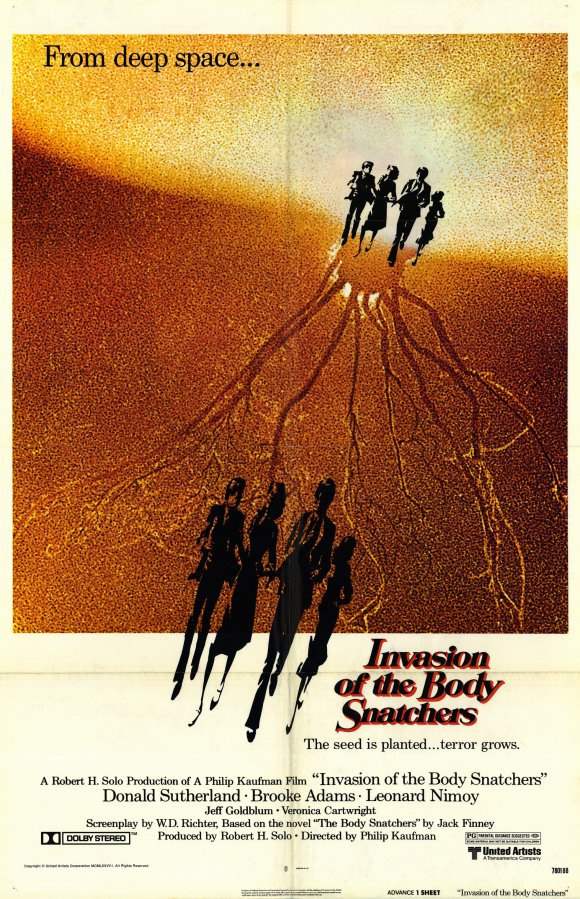Ten years later, The Mist still proves to be one of the most divisive Stephen King adaptations. I can understand that, too. It has a lot to live up to, given that it’s from the director of The Shawshank Redemption and The Green Mile, likely the two most critically acclaimed of any films based on the author’s work. It certainly has its fans, though it seems like it had many more of them when it was first released, as well as its loud and vocal detractors. People generally seem to like the overall story, for the most part. The claustrophobia of it is something that viewers by and large seem to think works pretty well.
A lot of the problems are with the monsters themselves, which is kind of fair. The original novella featured a slew of imaginative Lovecraftian creations and those proved hard to execute on film, not for lack of trying. We see a terrific assortment of monsters, but the CGI does not always hold up. Luckily, director Frank Darabont came up with a very easy fix for this by re-releasing the movie in black & white—which was what he had wanted to do in the first place.
Having the feature in black & white fixes almost all of its problems. It feels like more of a ‘50s B-Movie. The CGI looks so much better. And it even helps sell the truly controversial aspect of the film: the ending.
When people get passionately angry about The Mist—and they do—they’re always ranting about how awful the ending is and how everyone involved should be ashamed of themselves for ending it that way. I get why they’re so upset. It’s one of the most stark, bleak horror movie endings of all time. Given all of that, it’s something that actually works better in black and white.

Bleak endings and harsh scenes like this always tend to work better in black and white. Or they’re questioned less, at the very least. The death of the little girl in Frankenstein is a devastating sequence, but no one really questions its place or its worth. It’s the same with the bleak, harsh ending of Night of the Living Dead. It’s easier to digest in black and white. The ending of The Mist is somewhere between the two. It’s an emotional gut-punch. And I absolutely get that that’s not always what people want to see in a film.
Many people come at it from the standpoint that they go to the movies to be entertained and they do not want to feel bad, they don’t want something to make them sad—at least not at the level this one goes for. There’s no right or wrong approach, because it’s perfectly subjective. We’ll be arguing about the ending of The Mist forever—and that’s just a sign that it’s good.
For me, the ending is perfectly fitting to the overall story. The Mist is so much more than a monster movie. It is at its core a film about cultural paranoia. It’s not just the creatures that everyone is terrified by. They’re scared to death because they have absolutely no idea what’s going on. Not only are there all of these beings they’ve never even imagined seeing before, but they can’t see anything else. They can’t see the world around them. They don’t know if this is just happening to them or if it’s worldwide. They don’t know if their families are safe. They don’t know if there’s any hope at all because they have nothing to go on to tell them one way or the other.
That’s why the ending works. With everything they’ve been through, they come to the natural conclusion that they are entirely screwed. They have no reason to think otherwise. So they make the decisions they make and one person is left to deal with them as he realizes that if he’d held on so much as a second longer his child and friends would be alive and safe.
This only a part of the reason why I think The Mist works just as well, if not even better, than it did when first released. The main reason is primarily the character work and the overall structure of the film.
 The Mist is a great example of one of the best things Stephen King does as an author, which is using the supernatural to examine how frightening human beings can truly be by showing how they react to extraordinary situations. It’s honestly a deeply political story. It’s looking at society under a microscope. A group of people who find themselves locked in together will inevitably split into groups and start to form sides.
The Mist is a great example of one of the best things Stephen King does as an author, which is using the supernatural to examine how frightening human beings can truly be by showing how they react to extraordinary situations. It’s honestly a deeply political story. It’s looking at society under a microscope. A group of people who find themselves locked in together will inevitably split into groups and start to form sides.
One of the strongest elements of the film is Marcia Gay Harden, who delivers a terrific performance as a crazy religious zealot who believes the creatures have been sent from God and that what they’re experiencing is the rapture. People love to talk about how scary she is in this movie.
But what I really love about this character is the truly organic way in which she rises to power. She’s the reason The Mist feels more timely than ever now. The things she’s saying are insane. Her character doesn’t change as the movie goes on. She’s the only one who never really has an arc or falters in her belief. She’s the same person at the beginning as she is at the end. At first, nobody listens to her crazy ramblings. Nobody wants to hear it.

But as things get more insane and the night goes on and people get more and more scared, they start hearing her out. They start listening to her. That’s what feels familiar. Re-watching the movie recently, this whole subplot struck a chord with me. It feels unbelievably current. Maybe we’re simply going through a similar political climate as we were then, but it feels even more appropriate for 2017 than it did for 2007.
The Mist isn’t terrifying because of its monsters. It’s terrifying because it’s a blunt exploration of how easily opposing sides can form in any situation, how people as a group would always rather kill someone than listen to them. It’s a film that continues to spark political debate and will likely do so for a long time to come.
